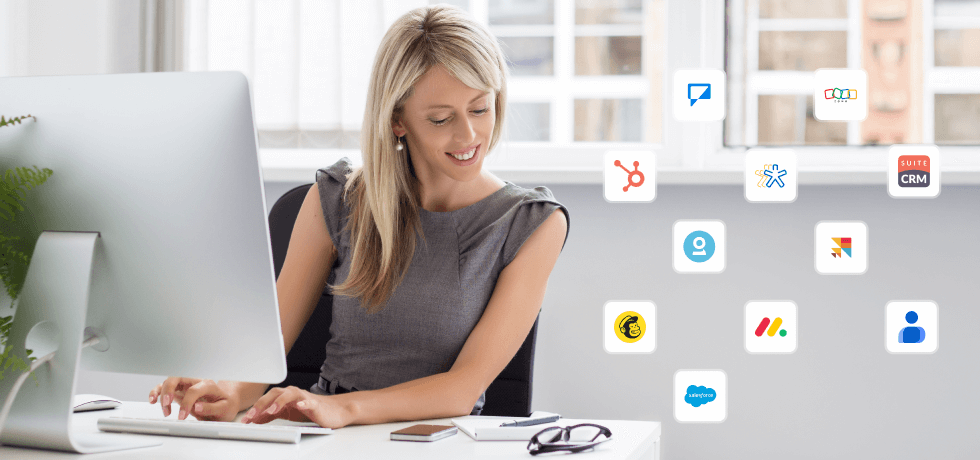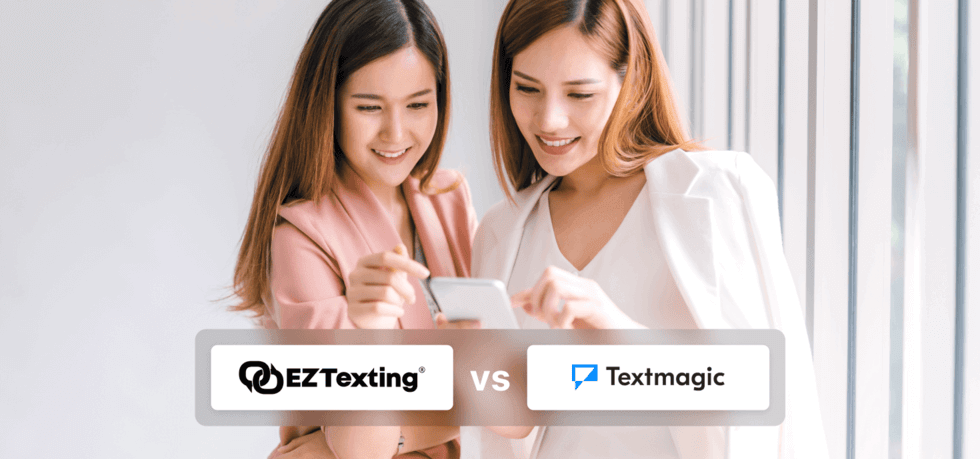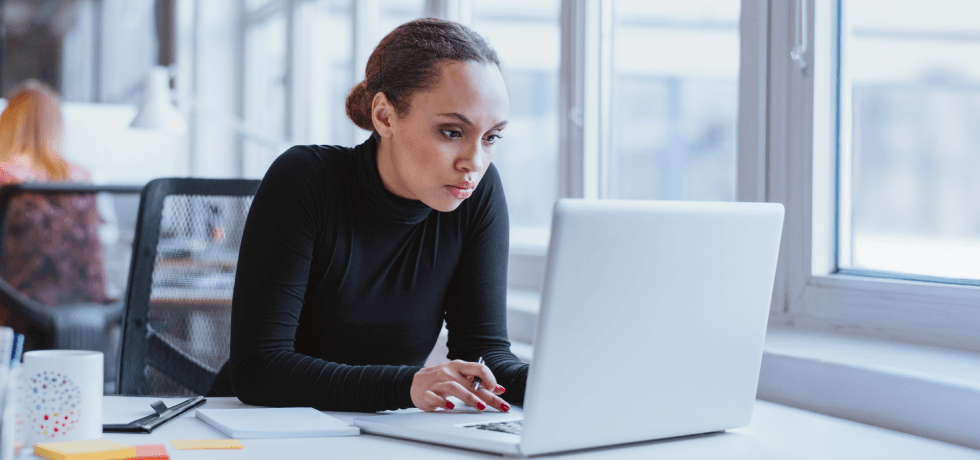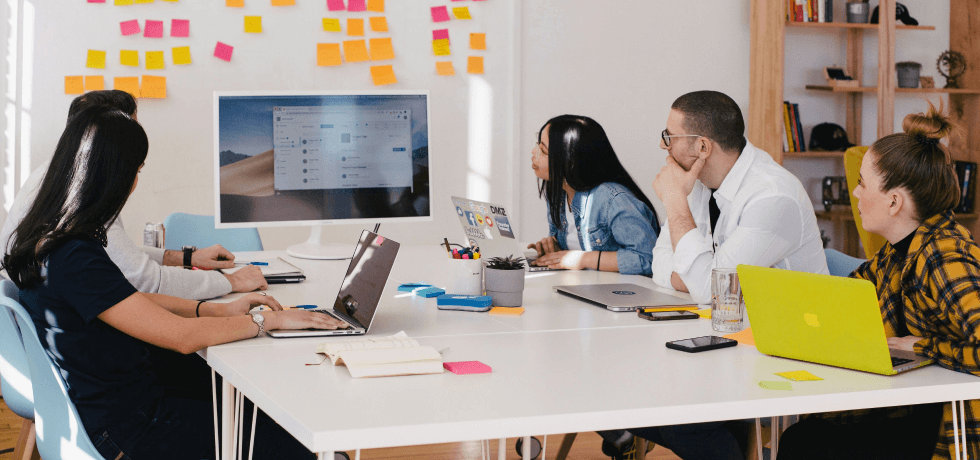
How much you charge for your service impacts how people see it and whether your company stands to make a profit. SaaS (software as a service) pricing models that balance flexibility, value, and revenue perform best.
These models include different pricing levels and features that fit various customer preferences. Choosing the right pricing model for a business with ongoing revenue can ensure a steady income and support growth. A well-thought-out pricing model encourages trials, promotes adoption, and fosters long-term user loyalty.
A recent study shows that over 80% of SaaS companies have updated their pricing strategies in the past two years. However, only 6% of companies conduct proper pricing research based on their customers, and up to 48% do not engage in any pricing research.

Read on to discover the pros and cons of SaaS pricing models. We’ve also included tips on how to create and customize your own pricing model to bring the highest value to your customers.
The evolution of SaaS pricing models
The first SaaS pricing models were as simple as they were ineffective. Client companies used to purchase licenses based on a per-user approach. This offered little value to the end user, as it did not cater to their specific needs.
Later on, subscription pricing took off. Users would access the product based on a recurring price, billed annually or monthly. This was beneficial for both the user and the provider. How? It made billing predictable for the user and ensured a steady income for the SaaS company.
As tiered pricing started to emerge, value for the end user increased. Clients could now choose the best package for their changing needs regarding features, data limits, and user numbers. Tiered pricing was also very convenient because it worked for businesses of any size and profile.
SaaS pricing models changed as customer expectations evolved. When perpetual licenses turned into subscriptions, starting costs went down. This made SaaS accessible for businesses of all sizes, including startups.

This means people no longer have to commit to a product they are unfamiliar with. Clients who do commit to a product want to pay only for what they need, so they will seek providers offering just that.
Common SaaS pricing models
Pricing plays a crucial role in the scaling of a SaaS business. It serves as a balance between attracting customers and maximizing revenue. SaaS companies can appeal to a broad audience by implementing flexible pricing models. This approach promotes sustainable growth by aligning product value with customer preferences.
Here are the most common SaaS pricing models businesses use to attract customers:
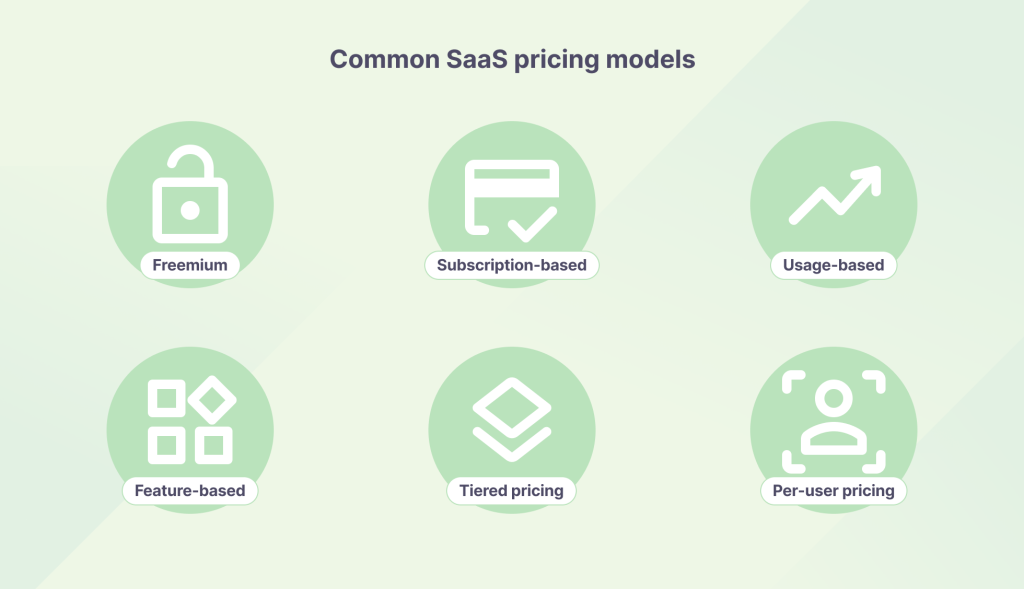
1. Freemium model
This pricing strategy allows you to provide basic services for free and charge for advanced or premium features.


Image source: wistia.com
- The low barrier to entry encourages widespread use
- Provides users with the ability to test the product before committing financially
- Can quickly build a large user base to market premium features to
- Converting free users to paying customers can be challenging
- The cost of supporting a large number of free users can be significant
2. Subscription-based model
This model has customers pay a recurring fee at regular intervals (monthly, quarterly, annually) for access to the software.

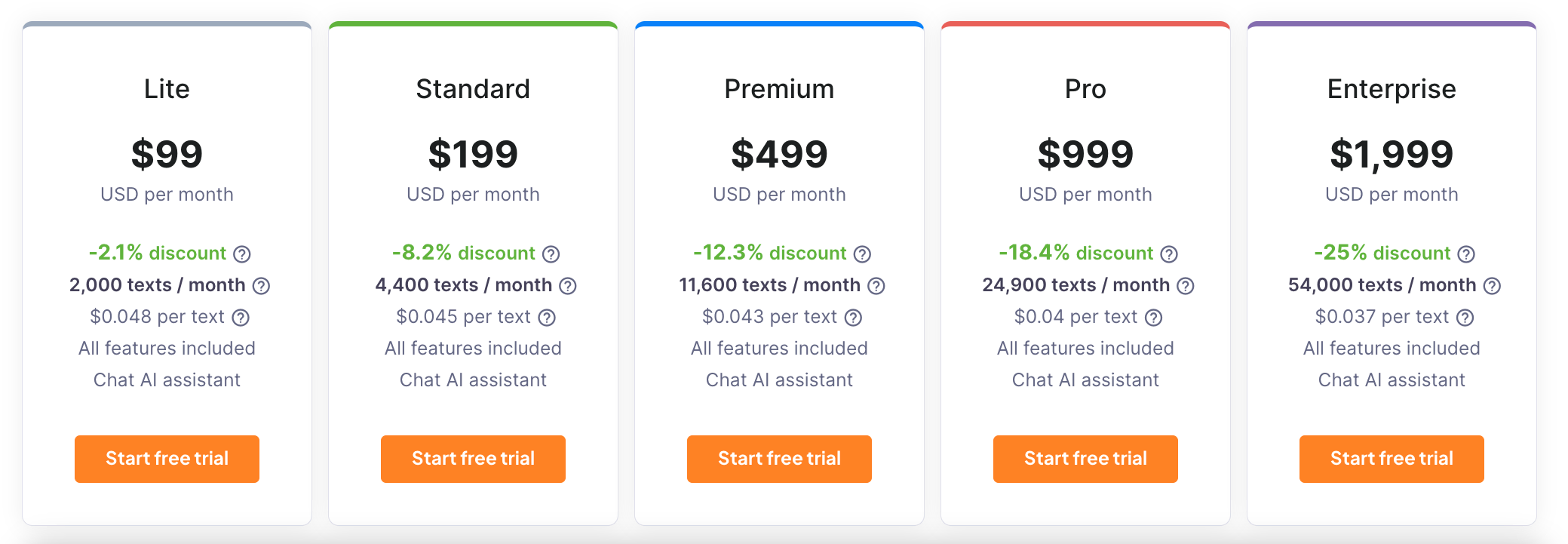
Image source: textmagic.com
- A predictable revenue stream facilitates better financial planning and investment
- Encourages ongoing product development and customer service
- Builds long-term customer relationships
- Requires continuous value delivery to justify recurring payments.
- Customers may unsubscribe if they perceive the cost-to-value ratio unfavorably
3. Usage-based model
Pricing is determined based on the actual usage of the service. The final calculation considers the number of transactions, the volume of data processed, or hours used.


Image source: zapier.com
- Customers pay only for what they use, which they view as fair and transparent
- Can attract a wider range of customers with varying usage needs
- Revenue predictability is more challenging, complicating financial planning
- High usage can lead to unexpectedly high charges for customers
4. Feature-based pricing
This model offers different pricing levels based on the features or capabilities included in the package.


Image source: wix.com
- Allows customers to tailor their subscriptions based on their needs
- Enables upselling as customer needs grow or change
- May overwhelm customers with too many options
- Important features may be gated behind higher pricing tiers
5. Tiered pricing model
This model is similar to feature-based pricing. However, it arranges products into different packages or tiers. Each tier has progressively more features, capacity, or other benefits.


Image source: betterproposals.io
- Provides flexibility and choice to customers, catering to a wide audience
- Encourages upgrades as businesses grow or needs increase
- Risk of complicating the buying process with too many choices
- Customers may find themselves paying for features they do not need
6. Per-user pricing
In a per-user pricing model, costs depend on how many people use the software. Providers can also calculate the final cost based on how many licenses the client needs.


Image source: app.slack.com
- Simple to understand and scales with the size of the customer’s team
- Revenue grows as customers add more users
- Can discourage adoption within small organizations due to higher costs
- Might encourage account sharing, reducing potential revenue for the provider
Enterprise vs. SMB SaaS pricing
As you can see, it’s important to have varied strategies to adjust to different client needs when pricing your SaaS product. Let’s see how enterprise SaaS pricing differs from its small to medium business (SMB) counterpart.
Enterprise SaaS pricing
Enterprise SaaS clients need flexible solutions that can be customized. They already have systems and workflows in place, so any service they acquire has to fit into their existing structure. This includes bespoke software versions and customized features they can’t find in standard packages:
- Analytics
- Advanced security
- Integration capabilities
The price matches the degree of customization and is, therefore, flexible. As the solution scales, so does the price. The price will then reflect:
- The scope of deployment
- The extent of customization
- The level of support required
Enterprise clients usually acquire in-bulk subscriptions, so they get volume discounts. This reduces per-unit costs, helping both the SaaS provider and the client gain financial advantages.
Discounts are also available for clients that commit to long-term contracts. These contracts ensure predictable, recurring revenue streams for the software provider. They often include a scalability clause, enabling enterprise clients to tweak usage levels as needed.
Because enterprise deals are so personalized and flexible for potential market shifts, they require extensive negotiations. This is where the client’s needs and the provider’s capabilities meet head-on, covering aspects like:
- Final pricing
- Support and service levels
- Customization requirements
- Data security and compliance
 The goal is to reach a mutually advantageous agreement. SaaS providers foster long-term relationships that can lead to upselling or cross-selling opportunities. At the same time, the client finds the best solution for their needs.
The goal is to reach a mutually advantageous agreement. SaaS providers foster long-term relationships that can lead to upselling or cross-selling opportunities. At the same time, the client finds the best solution for their needs.SMB SaaS pricing
Keeping pricing simple and clear is vital for SMBs to manage their limited resources. It helps them make better financial decisions and plan their budgets more effectively. This prevents billing discrepancies, ensuring no surprise fees make their way into the ledgers.
Inclusive pricing helps promote transparency. It avoids hidden fees by covering all essential features in one monthly or yearly payment. This way, SMB clients know what to expect from the start.
SMBs prefer monthly subscriptions because they require a lower initial investment. This helps them stay within budget while testing different products to see what the best fit is. SMB owners usually prefer paying for services monthly. They want to save the rest of their money for unexpected costs that frequently occur in smaller businesses.


SaaS pricing model templates
Pricing model templates help you standardize your pricing strategy across offerings. They help ensure consistency, transparency, and ease of understanding for potential customers.
Here is a step-by-step guide to creating a basic SaaS pricing model template. It aims to facilitate easy adjustments as the market, competition, or your product evolves.
1. Analyze your target audience
- Identify customer segments based on factors like industry, company size, job role, and pain points.
- Understand customer needs and value perception for each segment. See what features are most valuable and what problems your product solves.
- Estimate the lifetime value for each segment.
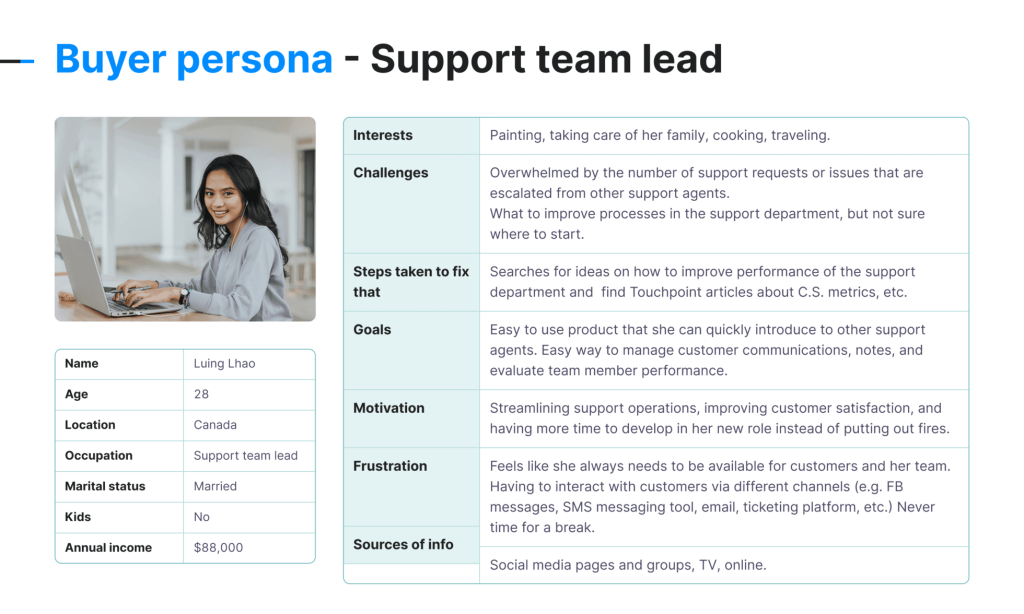
2. Analyze your costs
- Calculate all costs related to your SaaS product. These include direct costs (hosting, support, development) and indirect costs (marketing, administrative).
- Determine the minimum pricing based on your costs, including desired profit margins.
3. Research your competitors
- Research competing product prices to understand their pricing strategies.
- Identify gaps and opportunities to see where your offering fits within the competitive landscape. Is there a segment underserved by competitors where you can excel?
4. Select your pricing strategy
- Choose a pricing model that aligns with your value proposition and customer needs.
- Set initial prices for each plan or tier. Consider psychological tactics, like odd-even pricing (ending prices in .99 or .95).
We’ve compiled a couple of SaaS pricing model templates to help you get started. They are fully customizable, so tailor them to your business needs.
Single package SaaS pricing model template
This model is ideal for SaaS companies offering simple products to a specific audience. It’s also good for making buying decisions easier for customers.
| Package name: [Your product] Standard |
| Price: $[X] per month/user |
| Features included: Core feature 1: Description (e.g., Unlimited access to [core feature]) Core feature 2: Description (e.g., [Number] [feature units] per month) Integration: Description (e.g., Integrates with [popular software tools]) Support: Description (e.g., 24/7 email and chat support) Updates: Description (e.g., Automatic updates and new features) Best for: [Ideal customer segment] (e.g., Small businesses, Freelancers) |
| Additional benefits: Access to [exclusive content/resources][X]% discount on [related product/service] |
Multiple subscription tier SaaS pricing model template
This model offers various tiers to cater to different segments of your market. It allows customers to choose the package that best fits their needs and budget.
| Tier 1: Basic | Tier 2: Professional | Tier 3: Enterprise |
| Price: $[X] per month/user | Price: $[X] per month/user | Price: Custom pricing |
| Features: Core feature 1: Basic access Core feature 2: Up to [Y] [units/measures] Support: Email support with [time] response time [Any additional limited features specific to this tier] Best for: Individuals or startups just getting started | Features: All Basic features plus: Core feature 1: Enhanced access with more [units/measures] Core feature 2: Unlimited [specific feature] Integration: Access to [additional integrations] Support: Priority email and chat support Best for: Growing businesses needing more [feature] and support | Features: All Professional features plus: Custom [features/options] Dedicated account manager Enterprise-level support: 24/7 phone support Custom integrations and API access [Any additional premium features or services] Best for: Large organizations with complex needs |
Best practices for SaaS pricing
At this stage, you likely have a more profound understanding of creating a SaaS pricing model. We invited Alexandra Ilie, our product marketing manager, to share insights into what makes one successful:
“The key to a successful SaaS pricing model is understanding your customers’ journey and value perception. It’s not just about covering costs or maximizing short-term profits; it’s about aligning your pricing with the customer’s success. This alignment ensures that as your customers grow and derive more value from your service, your pricing strategy supports and accelerates this growth rather than hindering it.”
Follow these practices to ensure that your SaaS pricing model turns into a successful one.
Test and optimize your pricing
To optimize your pricing strategy, you need to employ various tests. Start with A/B testing different pricing tiers, discounts, and promotions to see what works best for your audience.
- Review your pricing model’s performance in terms of acquisition, churn, and revenue.
- Create two different pricing pages using distinct pricing models, structures, or presentations.
- Measure relevant metrics, such as retention and conversion rates, to determine which page to choose. Then, use the data to make adjustments.
 Customer usage data provides great insights into which features your clients prefer. Adjust your pricing strategy accordingly by placing preferred features into Exclusive or Premium plans.
Customer usage data provides great insights into which features your clients prefer. Adjust your pricing strategy accordingly by placing preferred features into Exclusive or Premium plans.Communicate value effectively through pricing
No matter how good your value proposition is, clients can’t know it fits their needs until they try out your product.
- Consider local pricing needs, including currency, purchasing power parity, and local tax laws.
- Try to include a Freemium version, giving clients a hint of what to expect. Once they discover the benefits firsthand, chances are they’ll purchase a paid plan.
 The key to creating the perfect pricing plan is outlining how your product solves clients’ problems better or differently from your competitors. Once you’ve grasped the real value of your SaaS product, you can adjust pricing to match it.
The key to creating the perfect pricing plan is outlining how your product solves clients’ problems better or differently from your competitors. Once you’ve grasped the real value of your SaaS product, you can adjust pricing to match it.Implement customer feedback into your pricing strategy
Customer feedback helps you assess if your product aligns with its perceived value. It offers insights into which features clients appreciate most.
- Create clear mechanisms for collecting customer feedback. These can include email surveys, interviews, or analyzing usage data.
- Be prepared to tweak your pricing strategy based on this feedback.
 Don’t just create standard pricing models. Allow users to choose which features they need most and set the price accordingly.
Don’t just create standard pricing models. Allow users to choose which features they need most and set the price accordingly.Stay flexible and adaptable
SaaS markets are subject to constant change. As technology evolves, so do customer preferences.
- Make sure that your pricing model can scale with your customers.
- Follow industry trends so that your pricing model remains relevant.
What does the future hold for SaaS pricing?
As the SaaS landscape continues to shift, so will pricing. Clients are increasingly interested in personalization and gaining full control over which product features they want to use. SaaS providers will continuously adjust their pricing models to reflect that, leading the way to tailored subscriptions and dynamic pricing strategies.
The advancements in machine learning and in-depth analytics will also impact SaaS pricing strategies. They will generate models that can be tweaked based on usage patterns, perceived value, and customer behavior. Artificial intelligence (AI) will be able to predict emerging market trends, setting the pace for real-time pricing modifications.
Related articles
How to succeed with direct response marketing
Direct response marketing (DRM) focuses on making a ...
The 11 best contact management software for your business in 2024
Customers are the backbone of any business, so it’s ...
EZ Texting vs Textmagic: Features, pricing, and use case comparison
Choosing the right business texting solution isn’t j...
2025 B2B SaaS guide: Our proven tactics to accelerate your growth
Discover the current state and predictions for the f...
15 Email survey templates to ensure customer feedback
Email surveys have emerged as a critical tool for bu...

